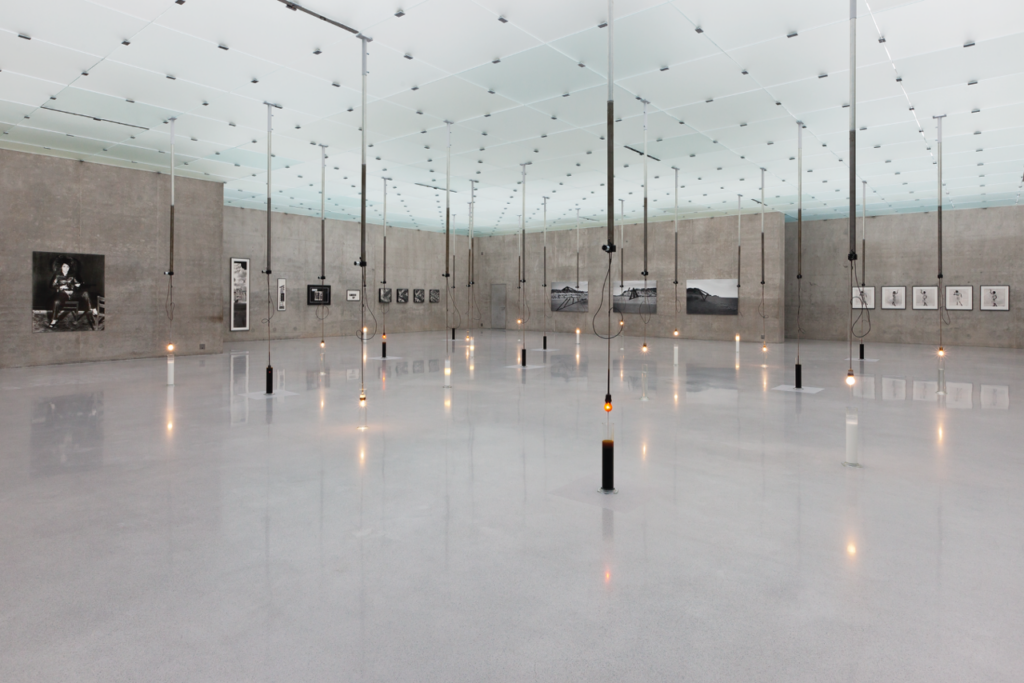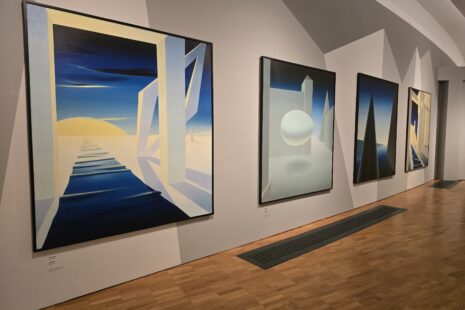As a core element, RIBOCA3 will shift its focus from the curatorial back to the artistic. Eschewing a fixed curatorial premise, Exercises in Respect will instead allow guiding themes and narratives to unfold organically through the artworks themselves.
Participants in RIBOCA3’s main exhibition include Nanna Abell* (b. 1985), Jeewi Lee (b. 1987), Nevin Aladağ (b. 1972), Dainius Liškevičius* (b. 1970), Meriç Algün* (b. 1983), Inge Mahn* (b. 1943), Halil Altındere (b. 1971), Olaf Metzel* (b. 1952), Béatrice Balcou (b. 1976), Boris Mikhailov* (b. 1938), Rosa Barba (b. 1972), Christiane Möbus (b. 1947), Mehtap Baydu* (b. 1972), Christine Moldrickx* (b. 1984), Ēriks Božis* (b. 1969), Sirous Namazi* (b. 1970), Miriam Cahn (b. 1949), Bjørn Nørgaard (b. 1947), Olga Chernysheva (b. 1962), Navid Nuur* (b. 1976), Evelīna Deičmane* (b. 1978), Alexandra Paperno (b. 1978), Jason Dodge* (b. 1969), Dan Perjovschi* (b. 1961), Anne Katrine Dolven (b. 1953), Ragna Róbertsdóttir (b. 1945), Dace Džeriņa* (b. 1971), Toni Schmale* (b. 1980), Krista and Reinis Dzudzilo* (b. 1989 and 1987), Pia Sirén (b. 1982), Maria Eichhorn (b. 1962), Anna Sokolova* (b. 1975), Ayşe Erkmen* (b. 1949), Māris Subačs (b. 1963), VALIE EXPORT (b. 1940), Superflex, Ceal Floyer* (b. 1968), Milica Tomić (b. 1960), Ingrid Furre* (b. 1987), Nasan Tur* (b. 1974), Noora Geagea (b. 1981), Maxim Tyminko (b. 1972), Tamar Harpaz* (b. 1979), Ken Unsworth* (b. 1931), Romuald Hazoumè* (b. 1962), Anu Vahtra* (b. 1982), Karl Horst Hödicke (b. 1938), Evita Vasiļjeva* (b. 1985), Pravdoliub Ivanov (b. 1964), Mariana Vassileva (b. 1964), Annika Kahrs (b. 1984), Richard Wentworth* (b. 1947), Šejla Kamerić* (b. 1976), Maaria Wirkkala* (b. 1954), Laura Kaminskaitė* (b. 1984), Sarkis (b. 1938), Jarosław Kozłowski* (b. 1945), Armands Zelčs* (b. 1978), Neeme Külm* (b. 1974). Ran Zhang* (b. 1981), Maija Kurševa* (b. 1981), Amanda Ziemele* (b. 1990), Alicja Kwade* (b. 1979). The artstis marked with an asterisk (*) denote a new commission to the biennial.
RIBOCA3 takes the artist’s vision as its conceptual starting point, positioning exhibition-making as a space for experimental expression that can be free of preconceived ideas. The biennial enables each artwork to operate on its own terms, with conversation sparked naturally rather than through the lens of a rigid curatorial theme. The title Exercises in Respect reflects the emphasis on appreciating what each artwork communicates individually while also operating within a biennial context. Chief Curator René Block elaborates:
“With a long history of phenomena, gestures of respect often signify an attempt at understanding each other on an equal footing despite our differences. This edition embraces the variety of voices it presents across continents and generations, striking both in harmony and disharmony with each other as they come together.”
Continuing the previous edition’s commitment to the development of the area, RIBOCA3 returns to Andrejsala (“Andrew’s Island”) as the primary venue for the biennial. Spanning over 15,0000 m2of a territory previously used as an industrial port on the bank of the Daugava river, Andrejsala is distinguished by its monumental industrial architecture, including an abandoned electric power station, ports, granaries, empty lots, hangars and a railway station, focalizing the exhibition. René Block explains how this landscape defined his selection of artists: “Filling this space demands a sense of musicality.”
Each artist becomes a voice, their artworks an instrument, and Andrejsala their atmospheric concert hall. Rather than following a score created by its conductors, RIBOCA3 acts as an orchestra that celebrates the sound it makes by itself.
Beyond Andrejsala, the Museum of Decorative Arts and Design – housed in the former St. George’s Church, the oldest surviving stone building in the city – will also host an exhibition of prints. The display features an array of 38 internationally renowned artists who have created works for biennials that René Block has previously curated in Hamburg (1985), Sydney (1990), Istanbul (1995), and Cetinje (2004). This presentation also includes works by some of the artists who will participate in the main exhibition. The artists whose works will be on display at the museum will be announced in spring.
Over half the work on view in the main exhibition will be new commissions created in response to Riga’s unique physical, social and historical terrain. Rooted in the significance of its geographic context, RIBOCA3 will present its largest showing of Latvian artists yet, while over half of the participating artists are from the wider Baltic region. Balancing regional perspectives with those of the global artistic landscape, the biennial continues to encourage the creative conversations of today with the city and its surroundings as an underlying framework.










